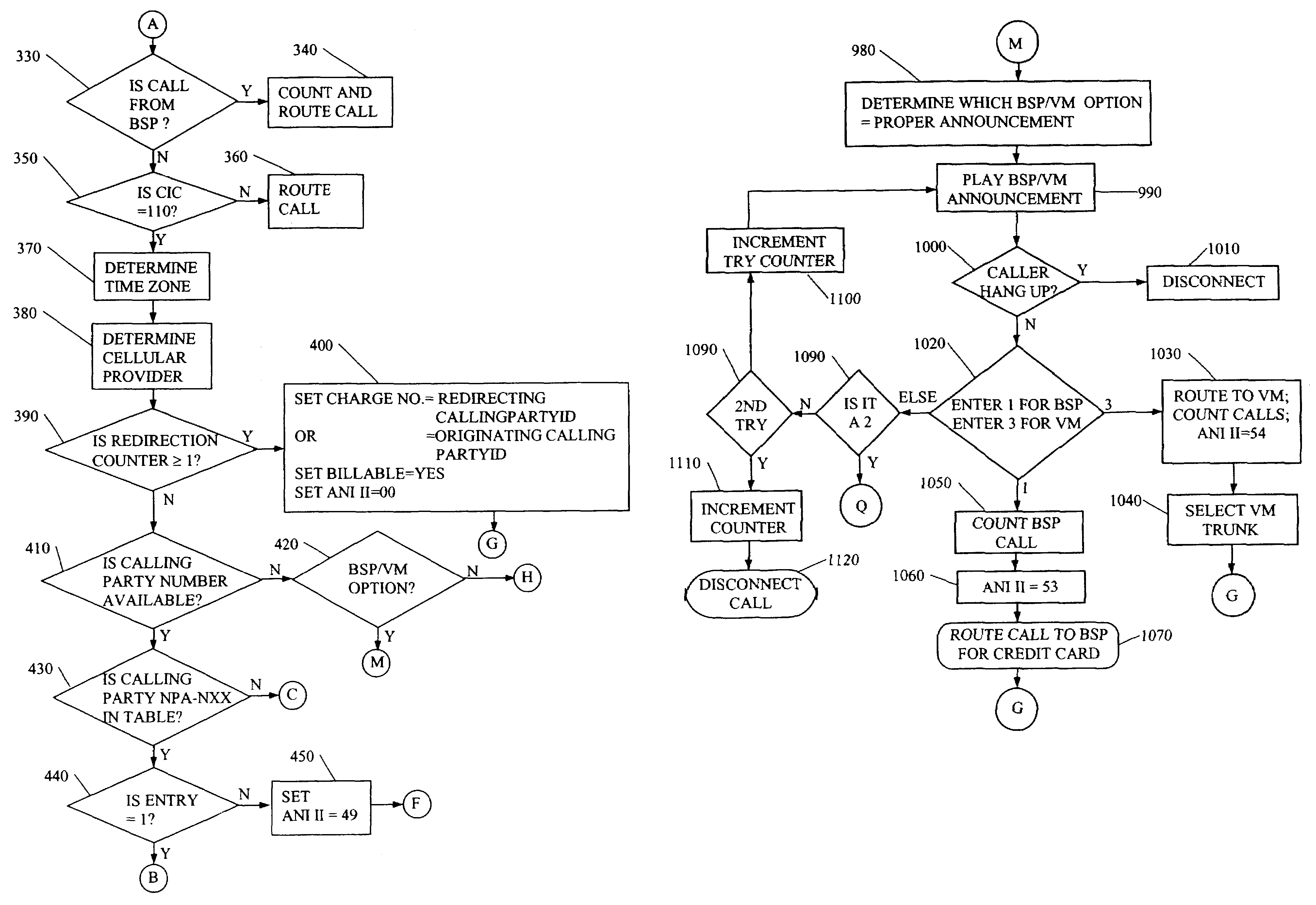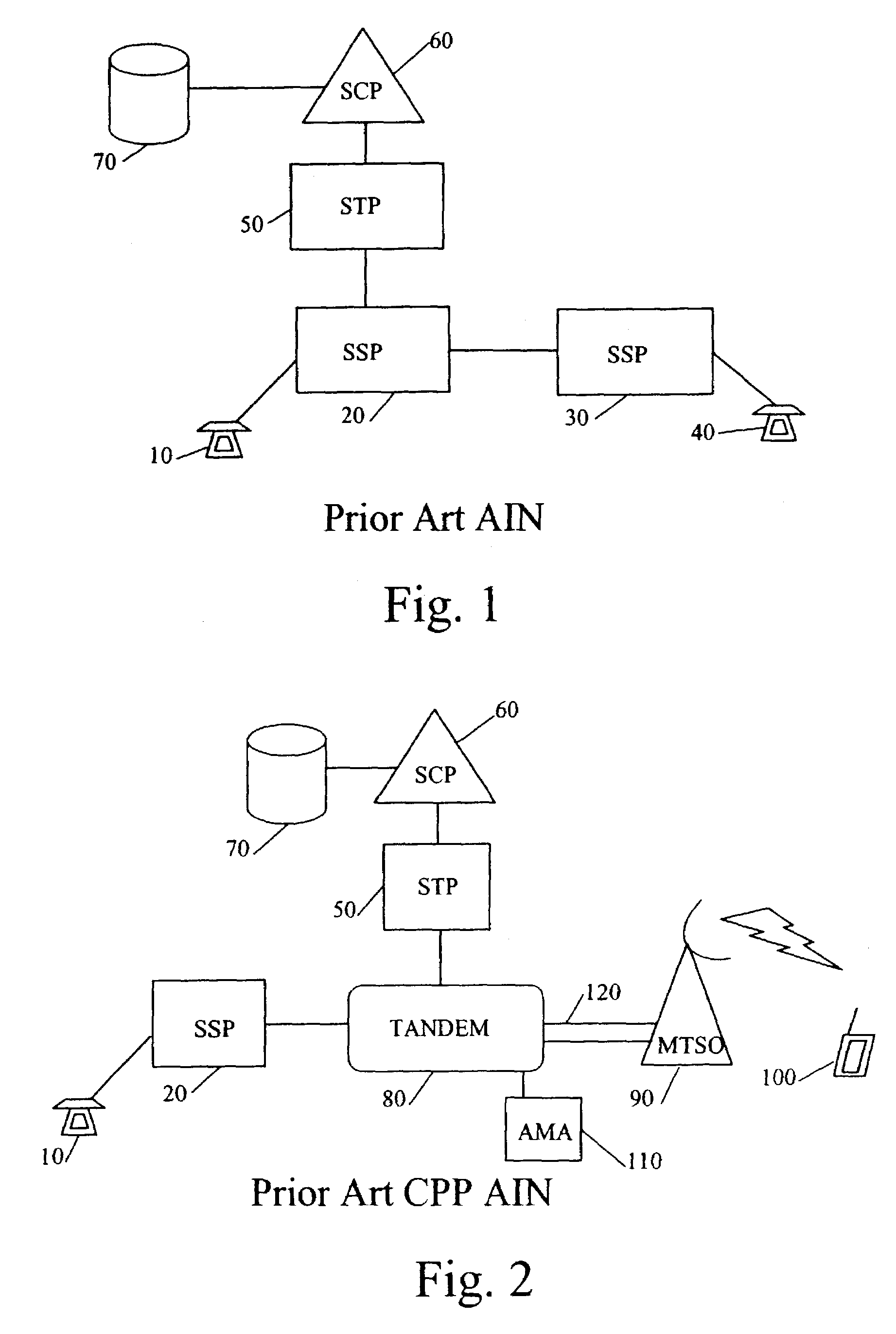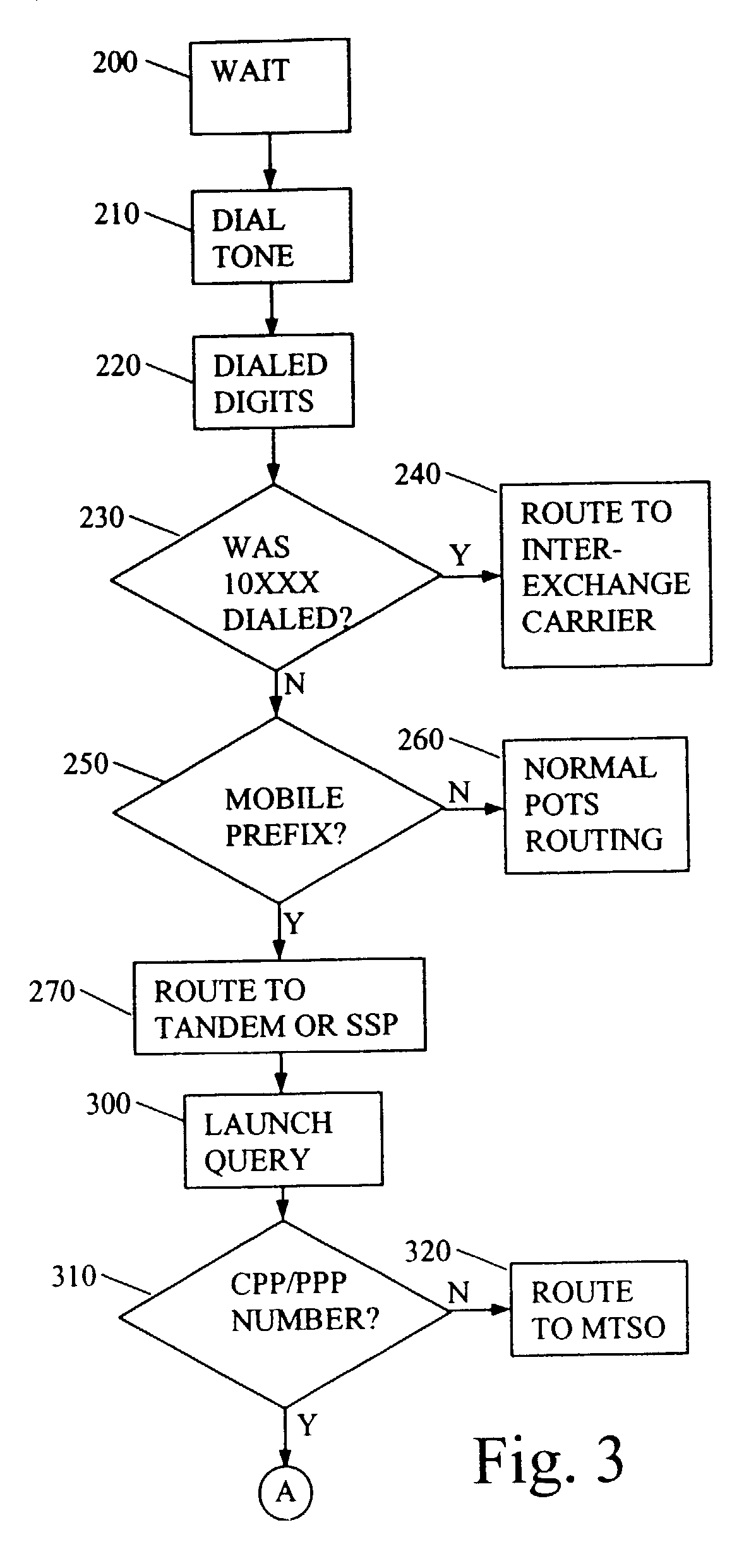Calling-party-pays call processing for cellular and paging
a paging and calling party technology, applied in the field of telephone call processing, can solve the problems of unlisted numbers, system limitations, and inability to meet business needs, and achieve the effect of preventing cpp/ppp calls
- Summary
- Abstract
- Description
- Claims
- Application Information
AI Technical Summary
Benefits of technology
Problems solved by technology
Method used
Image
Examples
Embodiment Construction
[0026]The preferred methods of enhanced Calling Party Pays and Paging Party Pays (CPP / PPP) are intended for use with cellular voice and / or data systems and paging systems. References herein to “cellular” subscribers and systems are also intended to include paging subscribers and systems. Similarly, references to calling and called parties generally apply to cellular as well as paging calling and called parties. Where significant differences exist between enhanced CPP cellular and PPP paging systems, they will be specifically mentioned.
[0027]The preferred methods of enhanced calling party pays operate on the existing digital telephone network infrastructure. However, many devices, particularly the Service Control Point, have been altered in order to perform the methods described herein.
[0028]The tandem switch preferably launches a TCAP query to its designated SCP, via its designated STP. The TCAP query is launched based on a standard 3 / 6 / 10 trigger. The 3 / 6 / 10 trigger is a mechanism ...
PUM
 Login to View More
Login to View More Abstract
Description
Claims
Application Information
 Login to View More
Login to View More - R&D
- Intellectual Property
- Life Sciences
- Materials
- Tech Scout
- Unparalleled Data Quality
- Higher Quality Content
- 60% Fewer Hallucinations
Browse by: Latest US Patents, China's latest patents, Technical Efficacy Thesaurus, Application Domain, Technology Topic, Popular Technical Reports.
© 2025 PatSnap. All rights reserved.Legal|Privacy policy|Modern Slavery Act Transparency Statement|Sitemap|About US| Contact US: help@patsnap.com



